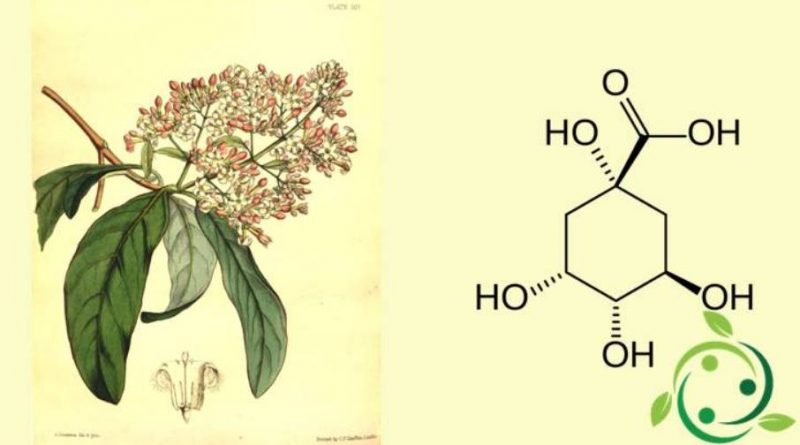Quinic acid
Quinic acid
Quinic acid, whose term in the official IUPAC nomenclature is: 1S, 3R, 4S, 5R-tetrahydroxycyclohexanecarboxylic acid is a monobasic organic acid with brute or molecular formula: C7H12O6.
Quinic acid is a cyclohexanecarboxylic acid.
This compound, also known by the alternative name of: D – (-) – quinic acid or quinic acid is an acid extracted as a crystalline solid from cinchona and coffee beans, as well as present in other plant species.
Quinic acid is contained in a concentration of 5-8% in the bark of cinchona plants.
In its natural state, it appears as a colorless solid that can be extracted from plant sources.
Quinic acid is responsible for the acidity perceived in coffee.
In addition to cinchona, it is present in coffee beans but also in the bark of the Eucalyptus globulus and Urtica dioica.
Synthetically it can be obtained by hydrolysis of chlorogenic acid.
Quinic acid has the property of decreasing the formation of uric acid in the body and is therefore used in the therapy of gout in the form of lithium salts, piperazine or urotropin.
Warning: The information shown is not medical advice and may not be accurate. The contents are for illustrative purposes only and do not replace medical advice.

